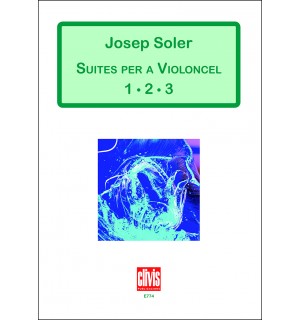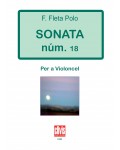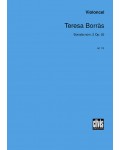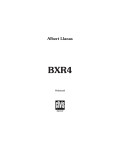
No products
Prices are tax included
Product successfully added to your shopping cart
There are 0 items in your cart. There is 1 item in your cart.
- English
- Castellano
- Català
Suites for violoncello 1-2-3
E774
New product
These three suites for the cello form a provisional unit as it is very likely another one will be added.
| Period | XXIth Century |
| Subheading / Parts | Suite n.1: 5 mov. Suite n.2: 7 mov. Suite n.3: 1 mov. |
| Instruments | Violoncello |
| Pages | 32 |
| Time | 18 min. |
| Contents | Partitura |
| ISMN | 979-0-3502-1068-6 |
| Edition | Printed |
These three suites for the cello form a provisional unit as it is very likely another one will be added. While the great historical paradigm is the six suites for unaccompanied cello written by Bach, if we focus specifically on Soler’s production, they transcend the genre to reveal a particular interest in the colour of the instrument. This presence is accentuated in the composer’s catalogue of the last few years, going further than a simple solo treatment to highlight the cello in his previous works, such as the first movement of his Quartet for Strings No. 3 (1984) or at certain points of his opera/oratorio Jesus of Nazareth (1974-2013). After his extensive output for the organ and piano from the 1950s, as well as for the clarinet, the instrument on which Soler has focused most of his composition is the cello. This has materialized in Scene with Skulls (1994) and more recently Three Pieces for Cello Solo (2003), Homage to Felip Pedrell (2007) and ...a final look... (2009).
The genealogy of this score goes back to five movements for the unaccompanied cello written in mid-2013, to which other movements were added at the end of that same year to turn it into the second suite. Soler would take a little longer to write the third one, which gives it a certain independence compared to the first two.
Meditative passages dominate the first suite which, after the fugue – dying in an expressive glissando – leads into a fifth movement whose climax is a gentle sequence of harmonic sul tasto. This composition contrasts with the last ritardando passage finished in a tritone, a feature that dominates the composer’s music. The second suite features a motif in the triplets that will be transformed in the following movements with small modifications, almost like a Mahlerian variation. The third and final suite picks up elements from the first two, transporting them into a different and occasionally aggressive atmosphere before returning to converge in an enigmatic tritone interval like in the second suite, but this time melodically.











